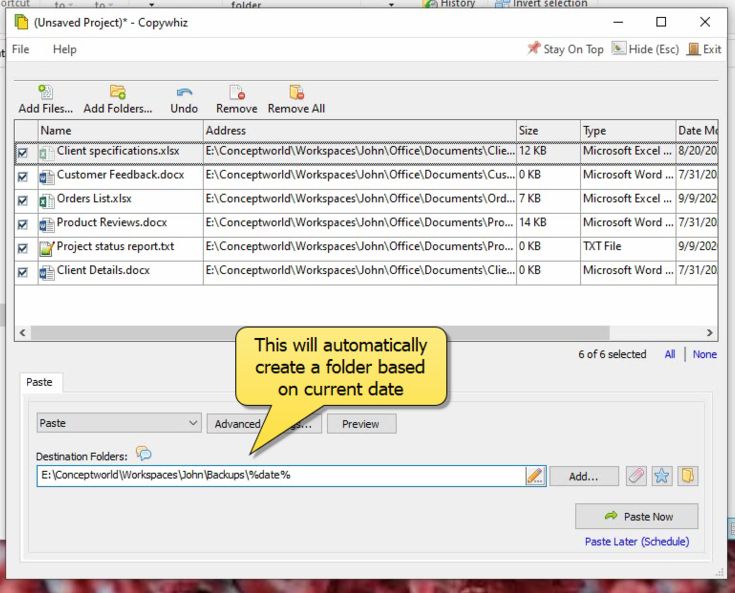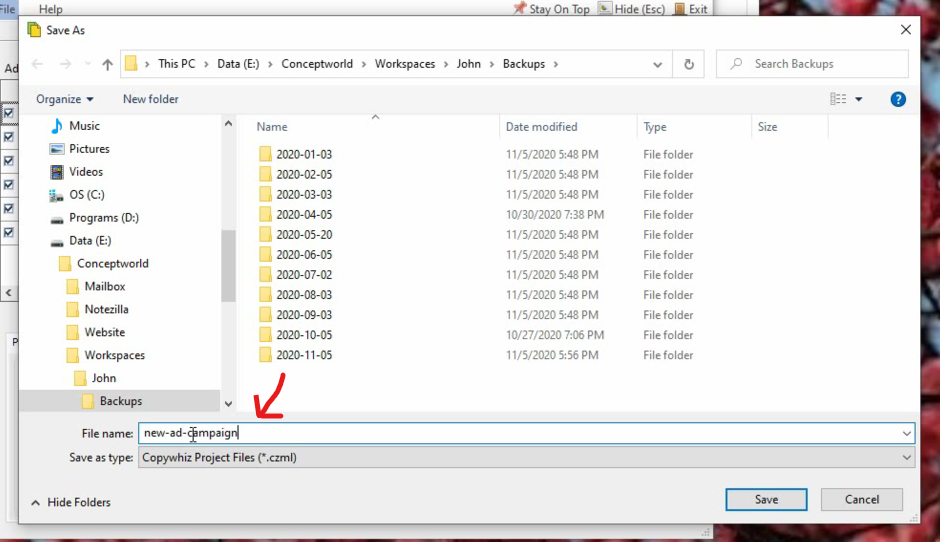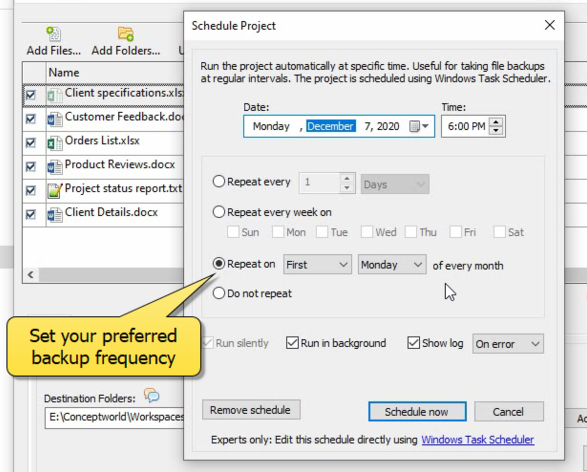Welcome back! In this post we shall learn how to automatically schedule file backups into a new dated folder each time. We have two tools that support this feature here i.e Copywhiz and Xcopy.
We have a step-by-step guide on how to achieve this. First we will take a look on how to use Copywhiz.
What is Copywhiz?
Copywhiz enhances your file-copy experience by letting you to have more flexibility & control over the file copying and backup process.
Here is how Copywhiz makes file copying a breeze:
- Copy only new or modified files
- Easily pick files by name, extension, folder etc from bunch of folders
- Automatically organize files based on file attributes and metadata
- Copy files to multiple folders/computers
- Copy files from multiple folders and paste them at once
- Sync files between source and destination
- Pick files from multiple folders and compress in single .zip file
- Schedule file backups
- Verify copied files for data integrity
- Retain security attributes of files & folders (ownership/user access)
- Several more hidden nuggets designed to make your file-copy task easier.
Here is a short video that shows how to achieve the above mentioned feature:
Video Transcription:
- In this video, we will take automatic file back ups at specific time.
- Select the folder, right-click and add it to Copywhiz.
- Go to the destination folder, right-click and choose Copywhiz Paste Advanced.
- We will add %date% in the destination folder address, to automatically create a new destination folder each time based on the current date, then we will paste now.

- To schedule automatic backups of these files, let’s first save them as a Copywhiz project.
- To save a copywhiz project, click on the ‘File’ tab and select the ‘Save as’ option.
- Name the project and save it.

- Select the option “Paste Later” to schedule this project.

Copywhiz will now automatically take backups.
Key Features of Copywhiz:
- User-Friendly Interface: Offers a graphical interface that’s easy to navigate, even for beginners.
- Selective File Copying: Allows you to pick specific files or folders based on name, type, or date.
- Advanced Scheduling: Schedule backups without needing additional tools like Task Scheduler.
- Error Handling: Provides better error management with detailed logs.
- Integration: Works seamlessly with Windows Explorer.
- Paid Software: Offers a free trial but requires a purchase for full functionality.
Step-by-Step Guide to Using Xcopy
Step 1: Create an Xcopy Backup Command
- Open Command Prompt (
Win + R, typecmd, and press Enter). - Type the following command:
xcopy "C:\Source" "D:\Backup" /E /D /C /H /R /Y/E– Copies all directories and subdirectories./D– Copies only files that have changed./C– Continues copying even if errors occur./H– Copies hidden and system files./R– Overwrites read-only files./Y– Suppresses confirmation prompts.
- Press Enter to execute the command manually.
Step 2: Automate with Windows Task Scheduler
- Open Task Scheduler (Press
Win + R, typetaskschd.msc, and hit Enter). - Click Create Basic Task.
- Name the task (e.g., “Xcopy Backup”).
- Set the Trigger (Daily, Weekly, or at System Startup).
- Choose Start a Program as the action.
- In Program/Script, enter
cmd.exe. - In Add Arguments, enter:
/c xcopy "C:\Source" "D:\Backup" /E /D /C /H /R /Y - Click Finish to save the task.
Your backup will now run automatically based on the schedule you set.
Conclusion
Copywhiz shines in simplicity and user experience. Evaluate your needs and technical comfort level to decide which one suits you best. Regardless of your choice, regular backups will keep your data safe and give you peace of mind.
Learn more about Copywhiz. Download the free trial from here.
For short tutorial videos, Check out this page.
Subscribe to our YouTube channel for interesting videos.
Check out our other cool products.
Have a good day!
Thanks for reading :)